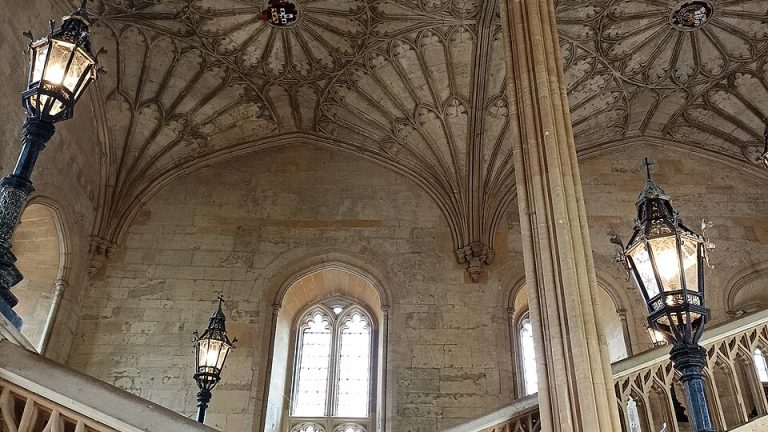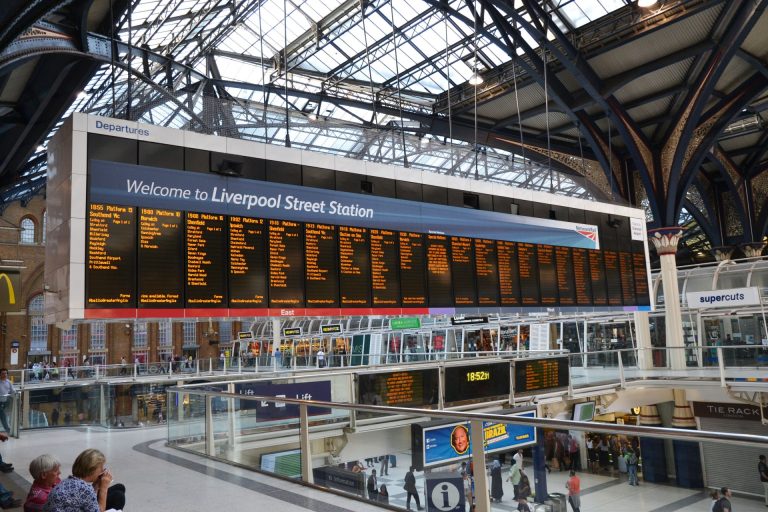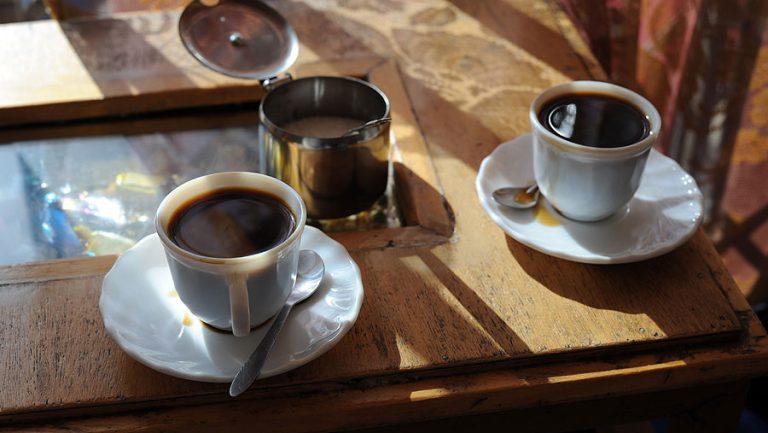Above the Churchill War Rooms, Dame Margaret Hodge sits with the easy confidence of someone who’s been in the fight for too long to be rattled by it. The day of our interview happens to coincide with Donald Trump’s visit to Britain – a neat bit of symbolism for a woman who has spent decades pushing back against populism and division. When I ask how she’s managed to survive in politics for so long she laughs: “I tried to give it up once, but politics is a drug.”
But if one phrase defines her career, it’s the advice she was given in the 1970s, at the height of the housing crisis, “Fight it Margaret”. Half a century later, that’s still what she’s doing – whether against the BNP in Barking in the early noughties, or corruption in Westminster now. Hers is not a story of quiet politics but rather continual resistance. In the days following the Unite the Kingdom march across London, that ethos feels almost radical.
One of the first things I learn about Hodge is how deeply her early life and two decades spent in local government shape her politics today. Born in Alexandria, Egypt in 1944 to Jewish parents who fled Nazi Germany, she describes how she knows what it means to be an ‘outsider’ – an experience that has shaped everything from the way she talks about immigration to her belief in the importance of communities.
Her route into public life, like much of her career, was accidental yet defiant. She never set out to be a politician. It was only in the weeks following the birth of her first child that she recalls calling her sister in floods of tears saying she couldn’t bear the monotony of changing nappies anymore, seeing little point in even getting dressed. She hurries to clarify that she, of course, loves all four of her children, but that they just were never quite enough for her. It was a friend in the local Labour Party in Islington – the daughter of Harold Wilson’s economic adviser Nicholas Kaldor – who offered the advice that would change everything: “Margaret go on the council, it’ll keep you sane while you’re changing nappies.”
First elected in a 1973 council by-election to represent the Barnsbury ward, Hodge went on to serve as Leader of Islington Council for a decade and later as Chair of the Association of London Authorities. Though she has since held several ministerial posts following her election to Parliament in 1994, it is this period in local government that she seems to recall with the greatest pride. When I ask what one thing she wants to be remembered for, her first reaction is a laugh – “bloody hell” – before she immediately turns to social housing.
Her eyes light up as she describes, in remarkable detail, how she transformed Islington’s housing programme in the late 1970s. Her predecessor as Chair of the Housing Committee had bought 12,000 homes but was converting only a dozen each year into council housing; Hodge expanded that to 1,000 annually, ultimately creating 16,000 new homes in the midst of a housing crisis. She smiles as she remembers the results: “my perfect vision of social democracy in practice” as she calls it – where city banker and council tenant lived side by side, indistinguishable except for the identical letterboxes bought in bulk for the converted homes.
It was, like many things in Hodge’s career, a battle hard won. When the 1976 financial crash wiped out local capital funding, she was told there was nothing to be done but refused to take no for an answer. Within three days, she had mobilised thousands of residents at the town hall and brought the Housing Minister down to see the conditions for himself – homes still running on gas power alone, with no indoor toilets. The funding was restored, and the project completed. It’s a story told with the satisfaction of someone who still believes can fix things, as long as you’re brave enough to give it a go.
She follows her answer about housing by asking if she can possibly stretch to two things to be remembered for – and, of course, I give in. The second: her fight against the British National Party (BNP) as the MP for Barking. By the mid-2000s, the far right had taken root in her constituency, becoming the second largest party in the council following the 2006 local elections. She describes how the biggest change she saw, however, was that people weren’t ashamed of voting BNP anymore. When she knocked on doors and spoke to voters, eight in ten would tell her they were thinking of voting BNP.
It became possibly the biggest fight of her career and she took it on, head-first. Refusing to retreat to Westminster, she stopped attending ribbon cuttings or making speeches in Parliament, instead staying in Barking listening to her constituents. She wrote personally to thousands of constituents, inviting them for tea (and, as she insists, chocolate biscuits and custard creams). “It was about rebuilding trust” she explains – listening to people’s anger over housing, jobs, and immigration and then turning these conversations into action.
As our conversation turns to the modern rise of Reform and right-wing populism – our interview taking place just days after the ‘Unite the Kingdom’ marches – Hodge draws a direct line back to those years. The same anger, the same insecurity – just on a national stage. She’s insistent that voters aren’t apathetic but angry, they feel politics has stopped listening. And as she recognises, immigration is central to that conversation – a subject she describes as being too often avoided,“so I started talking”. Having arrived in Britain as an immigrant herself, she describes how she knows how it feels to be an “outsider” but also the importance of creating communities. She never promised to cut numbers, but instead talked about how migration could work fairly, and bring value to the community.
Then, she pauses and asks if I’ve time for another story. It’s from one of her coffee mornings in Barking. One in particular stands out, a woman stood up to accuse asylum seekers of ruining the borough and being “benefit scroungers”. Before Hodge could respond, a white man interrupted to say he’d been on benefits for 25 years and didn’t want to be called a scrounger. A Jamaican father then spoke, explained that his children had grown up in Barking and gone to university, and he was proud to call himself British. The atmosphere was tense but by the end the same woman who had sparked the row crossed the room to apologise to both men.
It’s a morning that’s stayed with Hodge. One she describes as “deeply emotional” and clearly still drives her approach to politics and belief that it can still achieve as long as people are willing to listen and engage. It also highlights her beliefs that all politics starts from the local, and “politics is a marathon not a sprint”. For Hodge, it’s about the long process of communicating, listening, acting and reporting back – the steady rhythm of local work that builds trust over time. It’s a principle she’s carried from her years in Islington to Westminster, and one that still defines how she sees the purpose of politics today.
That patience explains her weariness with politics today – she describes herself as “deeply depressed” by politics at the moment. She describes how we’ve lost the center in the midst of extreme polarisation, recounting how during the Corbyn years and her fight against anti-semitism, the far-left levied the same critiques as the BNP had 15 years earlier. She talks of the loss of values in Labour politics; the erosion of the balance between economic growth and social justice that she believes should define it. She praises Brown and Blair for allowing economic growth and prosperity, and social justice and inclusion to not be seen as opposing ambitions, but ones that are interlinked. For Hodge, it was this balance that could deliver for communities like Islington and Barking and could work effectively against the disillusionment which fueled the far-right.
Yet she knows the world has changed and accepts that we now live in a world of social media – this fast pace of online politics undeniably leaves little room for patience or genuine dialogue. The kind of politics she believes in, feels increasingly rare. Still she refuses to give up on the idea of rebuilding trust: “transparency; tough regulation; even tougher enforcement; and proper accountability,” she recites, ticking them off as she goes along. Her ongoing fight, as the government’s anti-corruption champion, is part of this – the same belief in fairness and accountability that once drove her to fight for housing and equality at a local level.
Throughout our conversation, Hodge is brilliantly frank, disarmingly honest and utterly relaxed – her language, peppered with expletives, quickly followed by “don’t include that”. She jokes how she never made Cabinet due to running her mouth too much, and it’s easy to laugh along with her. Her candour and refusal to self-censor is what makes her such an enjoyable person to chat to
As our interview draws to a close as she rushes off to a meeting with a minister, there’s one thing she says in particular that stays with me: “in every job I’ve done, there’s something I did which lasted”. For a woman who has spent over fifty years in public service, this isn’t self-congratulation but a measure of impact. From the housing estates of Islington to the streets of Barking to the red benches of the House of Lords, the thread running through Hodge’s story is undeniably one of endurance – and fight.
As a young woman looking to enter politics there’s something quietly encouraging and oddly comforting about that outlook. At a time when public faith in politics feels fragile, Hodge’s career seems to offer proof that persistence and local action can add up to real, lasting change. After an hour with Margaret Hodge, it’s hard not to believe her when she says “we can change, there is hope”. It’s the sort of conversation that gives you conviction in what you do again – the most beautiful and brilliant sort of conversation in what seems to be an increasingly cynical political world. As I leave the building I’m simply left hoping that I can do such a conversation justice on the page.















